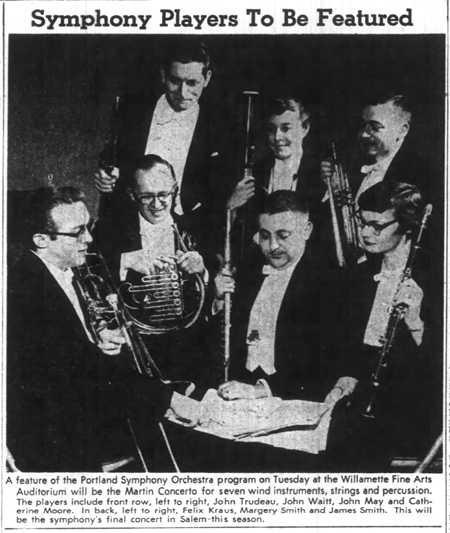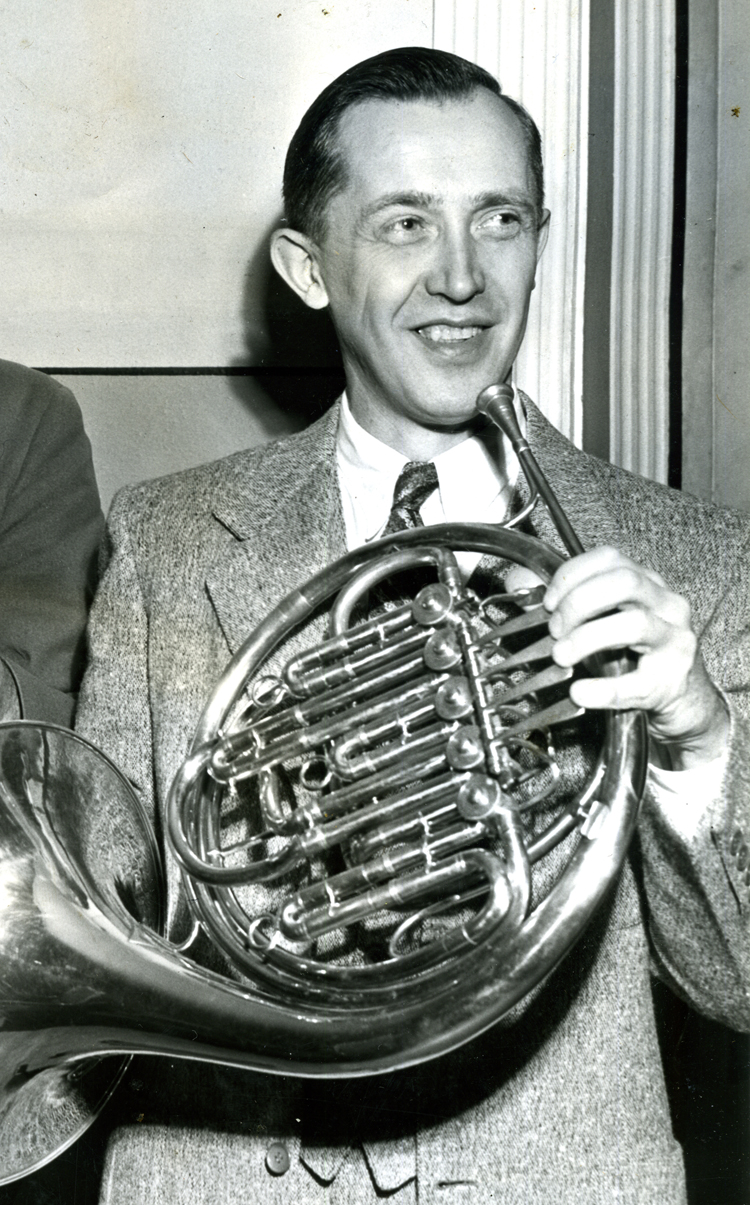 John E. Waitt (1947) |
|
|
|
By 1934 Mr. Waitt had become principal horn of the Portland Symphony Orchestra.3 On November 2, 1934 he and his woodwind colleagues were featured in trios and quartets by Charles Huguenin, Gabriel Pierne, and W.A. Mozart at a tea party of the Monday Musical Club of Portland held in honor of the orchestra's conductor, Willem van Hoogstraten. |
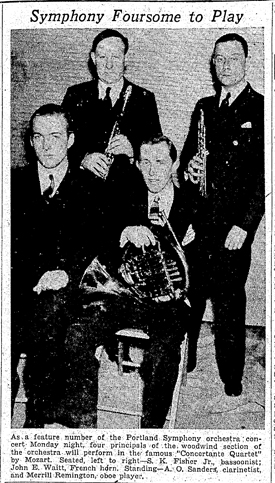 February 17, 1936 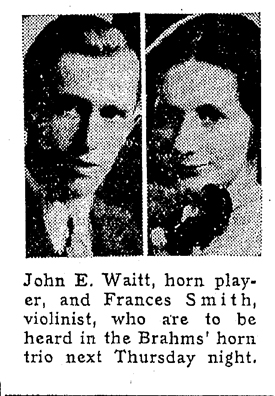 December 9, 1937 |
|
|
On January 16, 1940, the Portland Philharmonic Orchestra gave it's premiere performance at the Portland Municipal Auditorium under the direction of Leslie Hodge. It was sponsored by the Musicians Mutual Association and the city of Portland, with the cooperation of the Oregon Music Teachers' Association, the Oregon Federated Music Clubs and the Oregon Music Project of the WPA for the benefit of unemployed musicians. The first concert featured the horns in the Overture to "Der Freischutz' by C.M. von Weber. The horn section for the first season comprised Mr. Waitt, Mr. Reeder, Mr. Dietz, Roger James, and Dr. J. Willis. On May 21, Mr. Waitt and Mr. Dietz performed the final movement of "Dialogue for Two Horns and Orchestra", K.205 by W.A. Mozart.6 |
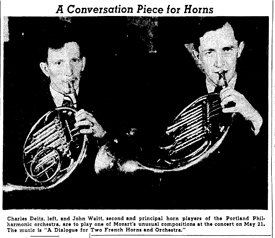 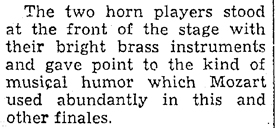 Notice in the above photo, Mr. Dietz also plays a five-valve horn of the Sansone design. |
On January 7, 1941 the Portland Philharmonic gave the first Portland performance of the horn-prominent third symphony ("Rhenish") of Robert Schumann. Two weeks later the horn section was featured accompanying bass-baritone Sigurd Nilssen in "Le Cor" by Ange Flegier and the Third Symphony ("Eroica") by Beethoven.7 |
|
In January 1947, nine years and a World War after the demise of the Portland Symphony, William A. Mills, executive secretary of the National Association of Music Merchants urged support for reviving the orchestra at the opening session of the music industry regional trade conference held at the Multnomah Hotel. The following month the Portland Symphony Society laid the foundations for a 1947 - 1948 season, based on public demand. Former conductor, Willem van Hoogstratten, was located in Tutzing, Germany, however he was forbidden to play or conduct in public due to his wartime activities. In April it was announced that Werner Janssen would be the new conductor. The new season would have ten Monday night concerts, nine Sunday afternoon matinees, and four children's concerts in Portland with run-out concerts to various cities around the state. The Sunday matinees would also be broadcast on the local radio station. The first public performance would be held on Monday evening, November 3, with a private concert a week earlier for members of the Society and guests. Of course, Mr. Waitt was appointed principal horn, along with many of his colleagues from the original Portland Symphony. During Mr. Waitt's tenure the orchestra had the following conductors: Werner Janssen (1947-1949), James Sample (1949-1953, guest conductors (1953-1955), Theodore Bloomfield (1955-1959), Piero Bellugi (1959-1961), and Jacques Singer (1962 - 1972). |
|
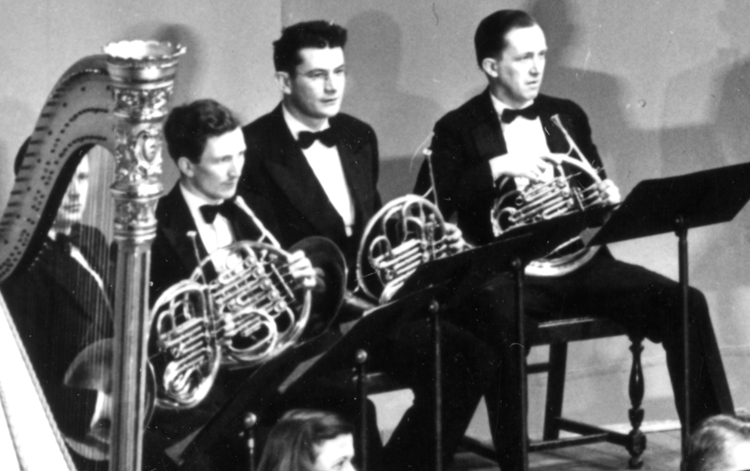 March, 1948 (left to right) Lyn Stewart, Charles Dietz, Del Reeder, and Mr. Waitt |
|
|
|
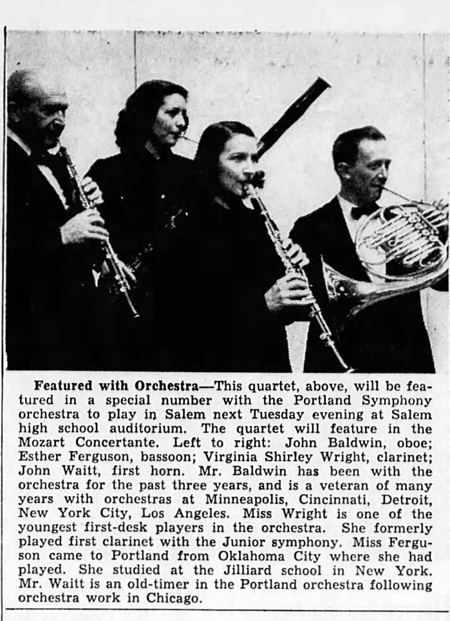 January 18, 1952
|
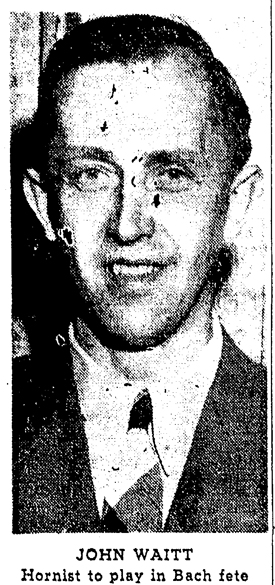 August 27, 1950
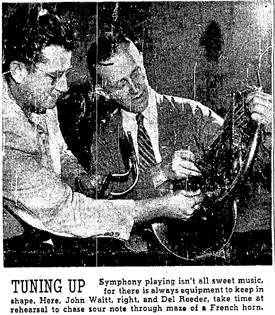 September 10, 1951
|
An article in the Portland Oregonian for May 13, 1956 highlighted the financial plight of the Symphony's musicians. That year, average income was about $1000 per year. According to a report by the City Club of Portland, the Portland Symphony's base pay for the 1959 Season was $924, which is equivalent to $7800 in 2017 according to the U.S. Department of Labor Bureau of Labor Statistics. Another article in the August 8, 1962 issue of the Oregonian placed the average wage of orchestra members at $1200 - $1300. Of course, as a long-tenured principal horn, Mr. Waitt probably would have been paid somewhat more. Mr. Waitt supplemented his Portland Symphony income by working as a food clerk in the local Safeway market (right). His regular hours were from noon to 9:00 p.m. except on days where he had Symphony obligations. Over the years he turned down opportunities for advancement because it would have conflicted with the orchestra schedule. |
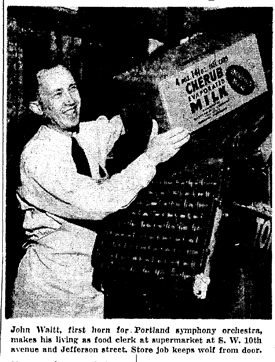 May 13, 1956
|
On January 31, 1961 members of the Portland Symphony presented a concert of contemporary and eighteenth century music for wind quintet and horns. In quintets by Anton Reicha and William Bergsma the horn parts were played by Russell White. Mr. Waitt was present in the Sonata for Four Horns by Carlos Chavez and the "Hymn and Fuguing Tune" number 12 for three horns by Henry Cowell. 10 |
|
|
|
| |
|
